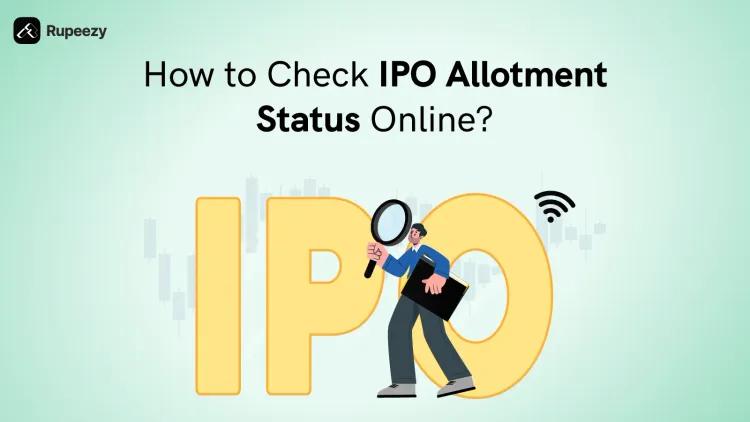Pre IPO Investing: What it is, How it Works, Pros and Cons


00:00 / 00:00
Consider the compelling story of Infosys. Founded in 1981, the company went public a decade later in 1991.
The early investors, who saw the potential in the firm and invested in the pre-IPO phase, made significant returns as Infosys became a leading name in the IT industry.
This is just one example of the exciting world of pre IPO investments, a world filled with potential yet requiring careful navigation.
Domestic investors that include family offices and high net-worth individuals (HNIs) in the past few years have been pouring funds into pre-IPO funds to invest in India’s major tech companies planning to go public and get listed in the Indian stock markets.
Many late-stage, pre-IPO funds have been launched focussed on new age tech companies.
In 2021, tech startups raised sizable capital through pre-IPO rounds and anchor investments. Overall, 10 startups raised more than $2.7 Bn through such rounds.
What is Pre IPO Investment?
Investing in pre-IPO refers to the process of investing in a company’s shares before they are publicly traded on a stock exchange through an Initial Public Offering (IPO).
This investment avenue has traditionally been dominated by private equity firms, venture capitalists, and high-net-worth individuals.
However, the scenario has evolved recently, with the advent of various platforms and pooled investment vehicles, opening the door to retail investors.
When you invest in a pre-IPO, you purchase shares at a price typically lower than the expected IPO price.
The objective is to profit from the anticipated rise in the share price once the company goes public and its shares are openly traded.
However, it is crucial to bear in mind that pre-IPO investing carries a greater degree of risk. Therefore, thorough due diligence is a must before embarking on this investment journey.
Table: Difference between Pre-IPO and IPO Investment
Aspects |
Pre-IPO Investment |
IPO Investment |
Investors |
Traditionally institutional investors and HNIs. Now, also accessible to retail investors via certain platforms. |
Accessible to all types of investors – retail, institutional, and HNIs. |
Share price |
Typically lower than the expected IPO price. |
As per the listing price. |
Risk level |
Higher due to lack of public financial information and uncertain listing gains. |
Comparatively lower as all information and regulatory approvals are in place. |
Return potential |
Higher due to lower price, early access and uncertain listing gains. |
Returns dependent on market performance, company’s growth, and investor sentiment. |
Benefits of Pre IPO Investment
- Potential for High Returns: One of the primary attractions of investing in pre-IPO is the prospect of high returns. If the company performs successfully post-IPO, the early bird investors can witness substantial profits.
- An illustrious example is the early investors in Infosys, whose investments multiplied exponentially over time.
- Access to Promising Companies: Pre IPO investments provide the golden ticket to associate with promising companies before they become public.
- These could be businesses with a strong growth trajectory, innovative technology, or a disruptive business model.
- Portfolio Diversification: Adding pre IPO investments to your portfolio can offer diversification, as the performance of these investments may not always correlate directly with publicly traded securities. Diversification can reduce risk and potentially enhance returns.
- Lower Prices: In many cases, the shares are priced lower during the pre-IPO phase than they are at the IPO.
- This gives early investors the opportunity to buy at a lower cost, which could lead to higher returns if the company performs well post-IPO.
Consider the case of Avenue Supermarts, the parent company of D-Mart. The company issued shares at Rs. 299 per share to select investors in the pre-IPO phase in 2016.
A year later, during the IPO in March 2017, the shares were priced at Rs. 299-299.
While retail investors could apply at this price, the shares listed at Rs. 604, a 114% premium over the issue price. For the pre-IPO investors, the returns were even more spectacular.
Table: Avenue Supermarts Pre-IPO vs IPO
Stage |
Share Price |
Year |
Pre-IPO |
Rs 250 |
2016 |
IPO |
Rs 299 |
2017 |
Post IPO |
Rs 604 |
2017 |
However, it’s crucial to remember that pre-IPO investing is not without its risks. The company may not perform as expected after going public, or the IPO may be delayed or even cancelled.
It’s also worth noting that pre-IPO shares often come with a lock-in period, during which you cannot sell the shares.
Therefore, as with any investment, it’s important to thoroughly research the company and consider your own risk tolerance and investment goals before investing in a pre-IPO.
Pre IPO Investing Risks
Just as pre-IPO investments can offer significant rewards, they also carry inherent risks. Here are a few:
- Lack of Transparency: Unlike publicly listed companies, those in the pre-IPO stage are not obligated to disclose extensive financial information, making it difficult for investors to conduct a comprehensive analysis.
- Illiquidity: Pre-IPO shares often come with a lock-in period, usually ranging between one to three years, during which investors cannot sell their shares.
- This makes pre-IPO investments relatively illiquid. As compared to an IPO where listing happens within days and investors have the option to sell the listed scrip.
- Pre-IPO investors cannot cash in their investment and are vulnerable to market volatility or adverse events that may impact stock price at later stage.
- Uncertainty of Going Public: Not all companies that plan an IPO actually go through with it. Various factors such as market conditions, regulatory hurdles, or changes in the company’s financial health can lead to the cancellation of an IPO.
- For example, hospitality startup OYO had filed initial documents with SEBI for an IPO, but SEBI asked OYO in Jan ’23 to update important information like risk factors and financial information in DRHP and refile for IPO.
- Risk of Underperformance: Even if a company does go public, there’s no guarantee the stock will perform well in the stock market. If the company’s performance post-IPO doesn’t meet expectations, investors may face losses due to low valuation.
Despite these risks, many investors pre apply IPO benefits as an attractive avenue due to the potential for high returns.
However, it’s essential to understand the company’s business model, its financials, and the potential growth of the industry it operates in before taking the plunge.
How to Invest in Pre IPO
Given the potential rewards and risks, here are some strategies to consider when investing in pre-IPO:
- Thorough Research: Understanding the company’s business model, its financial health, growth prospects, and the industry it operates in is crucial. A strong management team with a proven track record also adds credibility.
- Risk Assessment: Since pre-IPO investments come with a high level of risk, they should only constitute a small portion of your overall portfolio. Diversify your investments to mitigate potential losses.
- Consider the Lock-in Period: Remember, pre-IPO shares often have a lock-in period. Ensure you are comfortable with this illiquidity before investing.
- Seek Professional Advice: Given the complex nature of pre-IPO investments, consulting with a financial advisor or an investment firm specializing in pre-IPOs can be beneficial.
Pre-IPO investments can be an exciting addition to your investment portfolio, offering the potential for significant returns. However, they also come with their share of risks.
An investor should be comfortable with these risks and have a thorough understanding of the company in question before proceeding.
With careful consideration and due diligence, investing in pre-IPO could turn out to be a rewarding venture.
Invest in latest IPOs in few clicks with Rupeezy. Open a free demat account online within few hours. Trade equity intraday free, try Rupeezy’s 4-star rated app Rupeezy.
Key Takeaways
- Pre-IPO investing involves purchasing a company’s shares before they are publicly traded.
- Pre-IPO investments can provide significant returns if the company performs well post-IPO.
- There are risks involved in pre-IPO investing, such as lack of transparency, illiquidity, uncertainty of going public, and the risk of underperformance.
- Thorough research, risk assessment, considering the lock-in period, and seeking professional advice are crucial when approaching pre-IPO investment.
FAQs
How to buy Pre-IPO shares in India?
Obtaining pre-IPO shares in India typically involves liaising with a broker who specializes in this area or through secondary markets.
High-net-worth individuals or institutional investors usually have more straightforward access due to their financial capabilities.
However, with the rise of certain platforms and investment vehicles, retail investors too can tap into this opportunity.
Is Pre-IPO profitable?
Pre-IPO can be profitable, provided the company performs well post-IPO. Early investors in successful companies like Infosys and Avenue Supermarts have enjoyed substantial returns.
However, profitability is not guaranteed, and there are inherent risks associated with pre-IPO investments.
How does investing in IPO work?
Investing in an IPO involves buying shares of a company when it first offers them to the public.
This is done through a bidding process, where you indicate the number of shares you wish to buy and the price you’re willing to pay.
If your bid is successful, you’ll be allotted shares which will then be listed on a stock exchange for trading.
Is It good to apply in Pre Open IPO?
Applying in a pre-open IPO can provide early access to potentially lucrative investment opportunities.
However, it’s essential to understand the company’s fundamentals and the inherent risks associated with pre-IPO investments.
Does pre applying IPO increase chances?
Pre-applying for an IPO doesn’t necessarily increase the chances of share allotment during the IPO. The allotment process is usually based on the number of applications received and not on the time of application.
Is It better to buy before or after IPO?
Whether it’s better to buy before or after the IPO depends on various factors. Pre-IPO investments can offer higher returns if the company performs well post-IPO. However, they also carry higher risks.
On the other hand, buying after the IPO may be less risky as more financial information about the company is available, but the potential for returns might also be lower.
The content on this blog is for educational purposes only and should not be considered investment advice. While we strive for accuracy, some information may contain errors or delays in updates.
Mentions of stocks or investment products are solely for informational purposes and do not constitute recommendations. Investors should conduct their own research before making any decisions.
Investing in financial markets are subject to market risks, and past performance does not guarantee future results. It is advisable to consult a qualified financial professional, review official documents, and verify information independently before making investment decisions.

All Category







